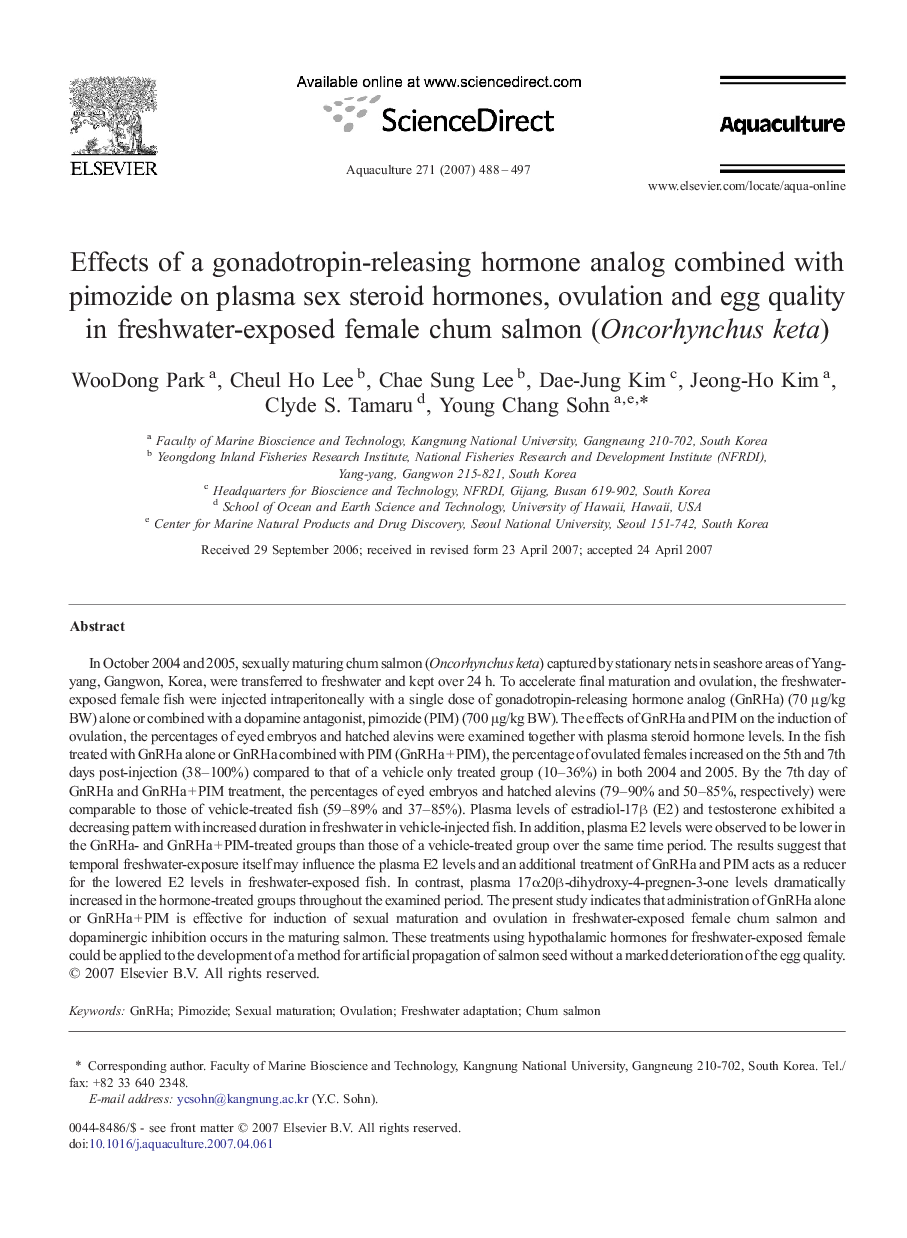| Article ID | Journal | Published Year | Pages | File Type |
|---|---|---|---|---|
| 2425173 | Aquaculture | 2007 | 10 Pages |
In October 2004 and 2005, sexually maturing chum salmon (Oncorhynchus keta) captured by stationary nets in seashore areas of Yang-yang, Gangwon, Korea, were transferred to freshwater and kept over 24 h. To accelerate final maturation and ovulation, the freshwater-exposed female fish were injected intraperitoneally with a single dose of gonadotropin-releasing hormone analog (GnRHa) (70 μg/kg BW) alone or combined with a dopamine antagonist, pimozide (PIM) (700 μg/kg BW). The effects of GnRHa and PIM on the induction of ovulation, the percentages of eyed embryos and hatched alevins were examined together with plasma steroid hormone levels. In the fish treated with GnRHa alone or GnRHa combined with PIM (GnRHa + PIM), the percentage of ovulated females increased on the 5th and 7th days post-injection (38–100%) compared to that of a vehicle only treated group (10–36%) in both 2004 and 2005. By the 7th day of GnRHa and GnRHa + PIM treatment, the percentages of eyed embryos and hatched alevins (79–90% and 50–85%, respectively) were comparable to those of vehicle-treated fish (59–89% and 37–85%). Plasma levels of estradiol-17β (E2) and testosterone exhibited a decreasing pattern with increased duration in freshwater in vehicle-injected fish. In addition, plasma E2 levels were observed to be lower in the GnRHa- and GnRHa + PIM-treated groups than those of a vehicle-treated group over the same time period. The results suggest that temporal freshwater-exposure itself may influence the plasma E2 levels and an additional treatment of GnRHa and PIM acts as a reducer for the lowered E2 levels in freshwater-exposed fish. In contrast, plasma 17α20β-dihydroxy-4-pregnen-3-one levels dramatically increased in the hormone-treated groups throughout the examined period. The present study indicates that administration of GnRHa alone or GnRHa + PIM is effective for induction of sexual maturation and ovulation in freshwater-exposed female chum salmon and dopaminergic inhibition occurs in the maturing salmon. These treatments using hypothalamic hormones for freshwater-exposed female could be applied to the development of a method for artificial propagation of salmon seed without a marked deterioration of the egg quality.
